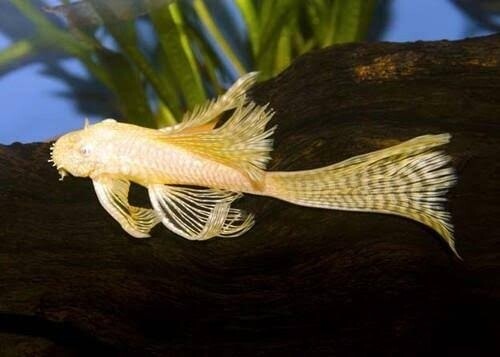Longfin Albino Bristlenose Pleco (3-4cm)
Longfin Albino Bristlenose Pleco Care Guide
Tank Setup
-
Tank Size: Minimum 100 liters (25 gallons) for a single pleco. Larger tanks are needed if housing more.
-
Substrate: Sand or smooth gravel to protect their delicate undersides.
-
Décor: Provide plenty of caves, driftwood, and hiding spots. Driftwood is especially important as they graze on it for fiber and shelter.
-
Plants: Safe with most plants. They may rest on broad-leaved species like Anubias or Amazon swords.
Water Parameters
-
Temperature: 23–27°C (74–81°F)
-
pH: 6.5–7.5
-
Hardness: 2–20 dGH
-
Filtration: Moderate flow with strong filtration to keep water clean, as they are sensitive to poor water quality.
Diet
-
Primarily herbivores.
-
Feed algae wafers, spirulina pellets, and blanched vegetables (zucchini, cucumber, spinach, or peas).
-
Supplement with occasional protein-rich foods like bloodworms or shrimp, but keep it minimal.
Tank Mates
-
Very peaceful and suitable for community tanks.
-
Can live with tetras, guppies, rasboras, corydoras, gouramis, and other non-aggressive fish.
-
Avoid large aggressive species that may bully or outcompete them.
Behavior
-
Nocturnal but often seen grazing during the day.
-
Long, flowing fins and albino coloration make them especially eye-catching.
-
Males develop bristle-like tentacles on their faces, while females usually have fewer and shorter ones.
-
Grows up to 12–15 cm (5–6 inches).
Breeding
-
Cave spawners. Males guard the eggs until they hatch.
-
Provide multiple caves if breeding is intended.
-
Fry feed on biofilm, algae, and powdered vegetable-based foods.
Interesting Fact
Unlike many plecos that grow very large, Bristlenose Plecos stay relatively small, making them one of the most popular “algae eaters” for home aquariums. The longfin albino variety is a selectively bred strain prized for its unique appearance.

